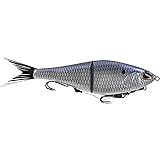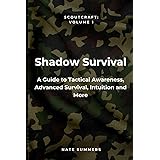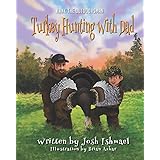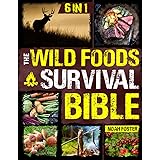Have you ever wondered what it truly means to live off the land, ensuring that nothing goes to waste in a survival scenario? The concept of survival cooking, as highlighted by the video above, is far more than just preparing food; it’s an intricate dance of resourcefulness, sustainability, and deep respect for nature’s provisions.
Mastering survival cooking involves not only identifying edible resources but also utilizing every valuable part, transforming potential waste into sustenance. This crucial skill set is indispensable for anyone venturing into the wilderness, from casual campers to seasoned bushcraft practitioners.
Embracing the “Nothing Goes to Waste” Ethos in Wilderness Cooking
The core principle of survival cooking is maximizing every single resource you acquire. This means looking beyond the obvious, finding utility in parts often discarded in conventional cooking. In a survival situation, every calorie, every nutrient, and every usable scrap holds immense value.
This approach minimizes your environmental footprint and ensures you get the most out of your efforts. It is a mindset that encourages innovation and deep understanding of your natural surroundings.
1. Foraging for Wild Edibles: Beyond the Fruit
When foraging for wild edibles, most beginners focus on berries or leaves. However, many plants offer a wealth of nutrients across various parts. Roots, stems, and even bark can be processed and cooked.
Consider the dandelion, where leaves can be eaten raw or cooked, roots roasted, and flowers used in various recipes. Learning the full spectrum of edible parts for common plants significantly boosts your food yield.
2. Ethical Hunting and Fishing: Maximizing the Catch
For those who hunt or fish for sustenance, the “nothing goes to waste” philosophy truly shines. Beyond the muscle meat, many other parts are highly nutritious and useful. Organs like liver, heart, and kidneys are packed with vitamins and minerals, often more nutrient-dense than muscle meat.
Bones can be boiled to create nutrient-rich broths, providing warmth and hydration. Even fat can be rendered for cooking, fuel, or preservation. Skin and hide, while not food, serve purposes like clothing or tools, further embodying the waste-reduction principle.
Essential Survival Cooking Techniques for the Wild
Knowing how to cook your scavenged provisions is just as important as finding them. Simple, effective methods are crucial when resources are limited. These techniques prioritize efficiency and safety.
These methods allow you to purify water, make food digestible, and enhance its flavor, all while using minimal tools and energy.
3. Roasting and Grilling: Direct Heat Methods
Roasting over an open fire or grilling on hot stones are primitive yet effective cooking methods. This directly applies heat, cooking food quickly and killing harmful bacteria. Small game, fish, and root vegetables cook well this way.
Always ensure food is cooked thoroughly, especially meat, to prevent foodborne illness. You can fashion simple skewers from green wood or use flat rocks as makeshift griddles.
4. Boiling and Steaming: Utilizing Water Wisely
Boiling in a pot, or even a primitive earth oven, allows for versatile cooking. It is excellent for cooking tough meats, making stews, and rendering fats. Boiling also purifies water, making it safe to drink.
Steaming, often done by wrapping food in large leaves and placing it near hot coals, preserves nutrients and moisture. Both methods are ideal for cooking foraged greens and roots.
5. Drying and Smoking: Preservation for Longevity
In a survival scenario, you might find more food than you can consume immediately. Drying and smoking are ancient preservation techniques that extend the shelf life of meat, fish, and some fruits. This allows you to store provisions for leaner times.
Sun-drying or using a slow fire for smoking removes moisture, inhibiting bacterial growth. This preparedness is key to long-term wilderness self-sufficiency.
Minimizing Food Waste and Maximizing Nutrition
Beyond the primary cooking methods, smart utilization of all food parts is paramount. This maximizes caloric intake and ensures a balanced nutritional profile, vital for sustained energy and health.
Thinking creatively about every scrap can turn a meager meal into a more robust one. It’s about respecting the resource and honoring its contribution to your survival.
6. Creating Broths and Stocks: The Power of Bones
After cooking meat, do not discard the bones. Simmer them in water over a fire for several hours to create a nutritious broth or stock. This liquid is rich in minerals, collagen, and electrolytes.
Broth provides warmth, hydration, and can be used as a base for stews or to rehydrate dried foods. It’s a simple yet powerful way to extract every bit of goodness from your catch.
7. Utilizing Plant Scraps: From Roots to Greens
Many parts of foraged plants are edible, even if they’re not the primary target. Outer leaves, stems, or small roots that might seem insignificant can be added to a broth or stew. They contribute flavor and nutrients.
Even small pieces of bark from certain trees can be processed for inner cambium, a thin, edible layer. This diligent approach exemplifies true waste-free living in the wild.
Safety and Sustainability in Survival Cooking
Resourcefulness must always be balanced with safety and ethical practices. Proper identification of edibles is non-negotiable to avoid poisoning. Additionally, ensuring sustainable harvesting practices is crucial for the long-term health of the ecosystem and your future food supply.
Remember that the wilderness provides, but it also requires respect and mindful interaction. Never over-harvest and always leave enough for nature to regenerate.
8. Proper Identification: Know Before You Eat
Before consuming any wild plant or mushroom, positive identification is essential. Misidentification can lead to severe illness or even death. Utilize field guides and only eat what you are 100% certain is safe.
When in doubt, it is always safer to abstain. Your survival depends on making informed and cautious decisions about your food sources.
9. Sustainable Harvesting: Leave No Trace
Always practice sustainable foraging and hunting. Take only what you need and leave plenty behind for others and for the ecosystem to thrive. Avoid disturbing the natural habitat.
This ensures that future expeditions, whether yours or others’, will find abundant resources. Responsible interaction with nature is a cornerstone of true wilderness survival cooking.
Mastering the art of survival cooking and living by the principle that “nothing goes to waste” equips you with profound self-reliance. It transforms a potentially daunting wilderness experience into an opportunity for deep connection with nature and a testament to human ingenuity. Embrace these practices, and you’ll find true sustenance and profound respect for the wild. Always prioritize safety and ethical practices when venturing into the world of wild survival cooking.











